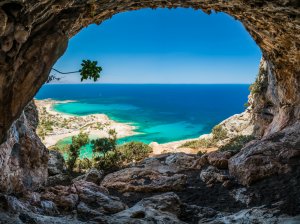With the government shutdown over, at least temporarily, our national parks are back open. Many of them require a lot of cleanup work to get back into their usual pristine beauty. Not having them officially open for a few weeks reminded us how great our national parks are, so we thought we’d do a series highlighting some of our favorites from each region. The 60 parks are divided into seven regions: Northeast, Southeast, Midwest, Intermountain and Pacific West, plus Alaska and the national capital area. We’ll start with the Northeast and Southeast.
Acadia
Featuring Cadillac Mountain, the tallest mountain on the East Coast and one of the first places in the U.S. to see sunrise each morning, Acadia is the oldest designated national park east of the Mississippi River. Covering several islands off the coast of Maine, the park is an excellent destination for birdwatchers and rewards hikers with stunning ocean views. The area was first inhabited by the Wabanaki people and later became the site of the first French missionary colony in America. To reduce summertime traffic congestion, the National Park Service is working on a new transportation plan to keep the park a beautiful and enjoyable destination.
Mammoth Cave
With more than 400 miles explored, this Kentucky park is the longest known cave system in the world. Stephen Bishop, one of the first Mammoth Cave guides, described it as a “grand, gloomy and peculiar place.” Bishop and some of the other early guides who ventured deeper and deeper into the cave system were slaves, all of whom were eventually freed. Bishop opened up a huge swath of the system by being the first to cross the deep vertical shaft known as the Bottomless Pit. While many of the accessible parts of the cave are lit electronically, there are a couple tours that feature lighting only by paraffin lamps carried by visitors.
Everglades
Protecting rare and endangered species such as the manatee, the American crocodile and the Florida panther, the park covers 1.5 million acres of wetland. There is an abundance of wildlife to see, from herons to dolphins. A 65-foot observation tower in Shark Valley lets visitors take in an expansive view of the wilderness. For those wanting to go a little deeper, there are ranger-led slough slogs (wading) through a cypress dome, and camping is permitted along the 99-mile Wilderness Waterway, which takes a week to traverse by canoe.
Virgin Islands
Recovery efforts were just underway in the wake of Hurricane Irma in September 2017 when Hurricane Maria blew in, bringing further destruction. But the park, which takes up about two thirds of the island of St. John, plus almost all of Hassel Island, presses on. There are still traces of the Taino people who inhabited the islands before European discovery in 3,000-year-old petroglyphs. There are remnants of sugar plantations. Visitors can go boating, stop at pristine beaches and even help monitor sea turtles.
Shenandoah
Covering about 200,000 acres in the Blue Ridge Mountains of Virginia, this park is great in all seasons. Skyline Drive is the most popular section, allowing visitors to drive 105 miles from one end of the park to the other. There are also 500 miles of hiking trails for those who want to take things a little slower. Foxes and bobcats frolic throughout the winter, which also affords an opportunity to spot foraging deer and turkeys. Birds of many feathers can be spotted in warmer weather. Breathtaking views of the Shenandoah River Valley abound year-round.







